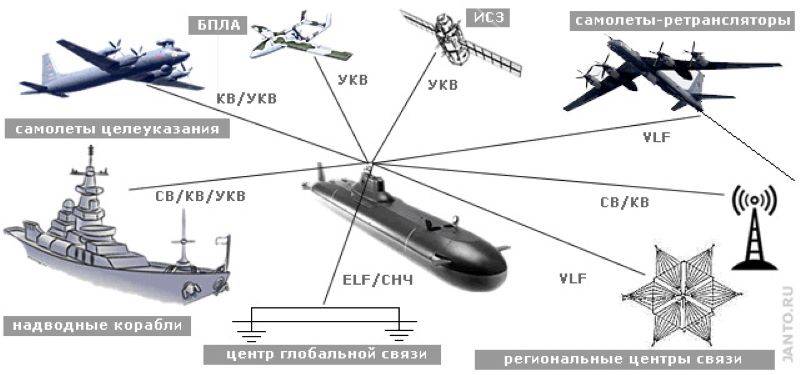Control call from under water

If for a long time there have been technological solutions for submarines how to communicate with each other, with ships and with land, then for divers the implementation of such technologies is difficult. Nevertheless, in recent years, despite all the difficulties, more and more such technologies appear.
Russia
Technical solutions for communication between divers existed in the USSR. In modern Russia, they came to grips with them around 2017, when the blockage of the country with sanctions caused the transition of the IT industry to the domestic market and the markets of friendly countries. IVA Technologies then made a communication complex for divers in a light suit (i.e., for this reason, suitable for military divers), while this was the first domestic solution since the collapse of the USSR.
The kit of the device included a special mask without a mouthpiece, in which the diver's mouth was free, he could be blown through while diving directly into the sealed mask, and this design did not prevent him from speaking. This mask was equipped with a communication headset built into it. The electromagnetic antenna, as well as the hydroacoustic one, is located on cylinders, on the back of the diver.
It is the tandem of electromagnetic and hydroacoustic antennas that makes it possible to transmit voice and data at a distance of up to 2 thousand meters under water, while in the surface environment, even through ice - at 60 meters. Technological solutions allow communication even in the conditions of interference observed in the coastal and intermediate zones. Somehow, the communication system manages to bypass obstacles, which was not observed in previous Soviet and Russian developments. For military purposes, the system is now used in the areas of protection of water areas, the activities of reconnaissance groups and the development of underwater unmanned aerial vehicles.
The disadvantage is the price of the complex, which even without a mask at the time of release cost at least 600 thousand rubles. The main price component was laid down in domestic antenna equipment, and not in Chinese processors. True, when Japan joined the sanctions because of the CBO, the developers managed to find domestic analogues of wires completely identical to Japanese ones.
Before that, in 2018, there were devices with laryngphones tested by divers of the Russian Guard, placed in the mouthpiece of an ordinary mask. But, since the sound is greatly distorted when talking through the mouthpiece, apparently, things did not go further than testing. At least there was no information about further use.
The technology of electromagnetic communication was developed by another Russian research and production enterprise - "Radiosvyaz" in cooperation with the Institute of Physics. L.V. Kirensky. They developed a highly sensitive broadband sensor for weak magnetic fields. The fact is that alternating magnetic fields pass through water without problems. As a result, the range of underwater communications from the developers was 93 meters.
The development of underwater wireless optical networks in Russia, however, does not cancel strategically important wire decisions. In particular, last year Rostelecom commissioned a fiber-optic line Petropavlovsk-Kamchatsky - Anadyr. The line was laid through the coastal waters of the Bering Sea. But this is a civil IT solution that will allow the residents of Chukotka to use many Internet services. Now the issue of laying a similar line along the Murmansk-Vladivostok route along the bottom of the Arctic Ocean is being decided.
USA
At the same time, in the United States, the Mobile Intelligence Laboratory of the University of Washington is developing the AquaApp mobile application, which will allow divers to communicate underwater using mobile phones. Many animals, such as marine mammals, can communicate underwater by voice. Such communication includes, in particular, the songs of whales. But a person will not be able to do this, and not because the diver’s mouthpiece interferes with talking (there are, as written above, modern designs where the mouth is free), but because of the reduced frequency of the human voice, which, because of this, under water is unintelligible to another diver. Therefore, combat swimmers, like amateur divers and industrial divers in light wetsuits, are still forced to communicate mainly with gestures.
AquaApp modifies the human voice so that when the phone's speaker is leaned against a diver's mask, it will be transmitted in an "impregnated" form to another diver who has the same application on his phone, which translates it into frequencies corresponding to the human voice.
Despite the fact that the developers claim that they have coped with the problem of sound reflections from the bottom or engineering structures, there is a definite problem for combat swimmers in this IT product. Due to the general availability of the application, all conversations can be intercepted by the enemy. In this case, probably, the creation of something similar by military structures, only with the encryption function, can come to the rescue.
China
In China, work is also underway to create a communication system between divers. But, unlike the Russian counterpart, its range is only 35 meters. The innovation lies in the fact that it uses optical technology. Initially, it was intended to connect the ship with drones, but it can also be used to communicate between divers underwater. A system of mirrors is used as an optical signal receiver.
Conclusions
It is believed that the United States leads the world in submarine communications technology. Canada and European countries follow, first of all, Germany, then - the Asia-Pacific countries. Russia is not included in the list of leaders, but, apparently, the sanctions and the desire to organize import substitution of military products, apparently, had a very positive effect on this kind of development.
- Mikhail Vikentiev, Pyotr Nenarokov
- iva-tech.ru, janto.ru
Information